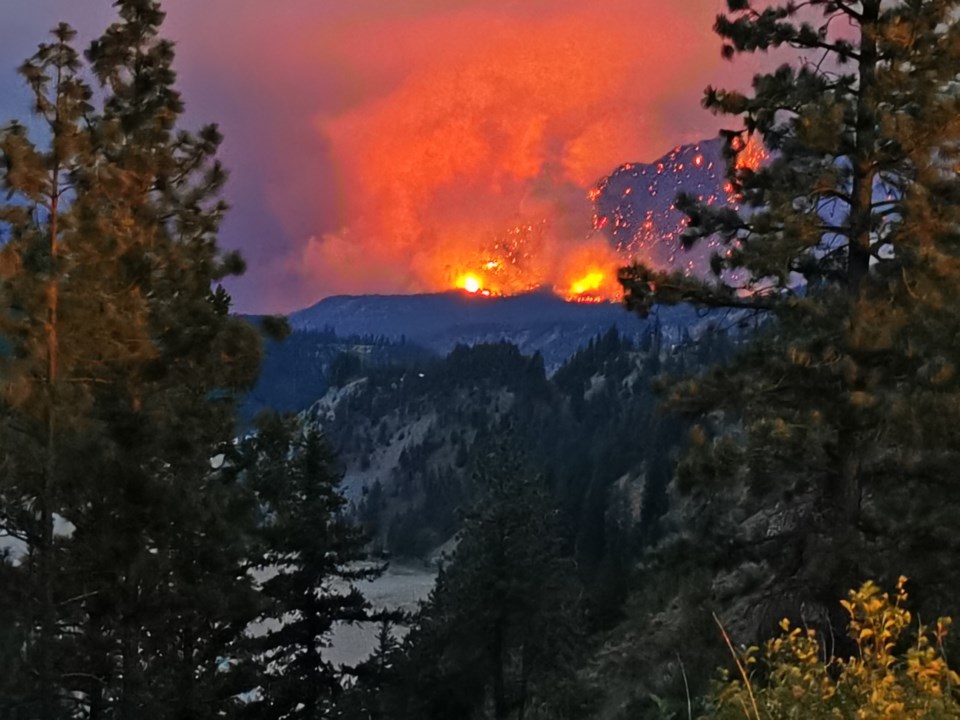As the investigation continues into the cause of a recent fire that burned most of the village of Lytton to the ground, Whistler and Pemberton mayors are raising concerns over the potential fire risk posed by additional train traffic through the Sea to Sky.
“Am I concerned? Yes,” said Whistler Mayor Jack Crompton.
“I certainly would ask that CN up their game. It’s the same request I’m making to our community and I’m hopeful both will take up that challenge.”
With its operations impacted by the Lytton fire, CN said it expects to run one to two rerouted trains a day through the corridor, after more than a year of relative inactivity on local tracks. The national rail operator has also committed to additional safety measures in the wake of the Lytton blaze, including patrols along the railway as trains circulate to look for any signs of fire; inspections of locomotives and other rail equipment for mechanical issues; and a review of electronic inspection equipment data that monitors trains for mechanical problems.
As the valley continues to experience tinder-dry conditions, Pemberton Mayor Mike Richman said the additional measures CN has put in place are a step in the right direction.
“It’s very much in line with what we’ve been asking for: equipment checks, fire suppression, having a vehicle follow the transit train behind, heightened inspections,” he noted.
“Hopefully it’s at a level that we need, let’s put it that way. We hope they actually look after the vegetation, and the fire suppression is sufficient to protect us.”
No exact cause of the Lytton fire that killed two people and razed the village has been determined. Two separate investigations, led by the RCMP and Transportation Safety Board (TSB), are ongoing. Mounties are now focusing their probe on a parking lot and park area that provides access to a foot and rail bridge across the Fraser River, looking for all movements of people, vehicles and trains around the time the fire started on June 30. The TSB investigation, meanwhile, is looking into whether a freight train may have set off the fire.
CN has denied any role in causing the fire and said a video circulating on social media claiming to show a train on fire in the area of Lytton was taken hours before the blaze ignited, and 45 kilometres south of the village. In a statement to media, CN said the train travelled through the area “uneventfully” and smoke seen in the video clip was from a different fire already burning.
Both Whistler and Pemberton mayors, as well as Whistler’s deputy fire chief Chris Nelson, indicated that, historically, CN hasn’t been all that communicative with local governments.
“I recognize that CN is a huge operation all over the country and goes through hundreds of small towns like ours and tries to manage all of us and our requests,” Richman said. “Nonetheless, our concern is for our valley and our residents. In that context, there have been times when communication is not what we would like it to be. Would we like to know what the schedule is, when trains are going to return, what that’s going to look like? I think that would be really helpful to local government to get that advance warning.”
Nelson pointed to a fire he said was ignited in 2018 during an extreme fire rating on the east side of Green Lake from sparks caused by CN’s rail-grinding. Despite sending several letters to the rail operator, he said he never got a response.
“One errant spark can set a bush alight, and they had no precautions after the fact,” he said. “I don’t know if they’ve shut [rail-grinding] down, but if not, they should, or if they don’t, they should put the correct precautions in.”
After CN emailed a statement detailing its added safety measures last week, Pique sent a list of follow-up questions, including whether the freight service is continuing with rail-grinding, and did not receive a reply by press time.
Looking ahead to the rest of the wildfire season, Crompton said it’s up to every Whistlerite to be on the lookout for signs of fire.
“[I] request that residents really join in the effort to ensure that we reduce the threat of wildfire,” he urged. “Keep your eyes on the forest, FireSmart your property and do whatever you can to ensure that your actions don’t contribute to a negative event in our community.”
Whistler was fortunate to avert disaster on June 28 when a major structural fire went up in Blueberry, Nelson said, adding that “the only thing that saved Blueberry from having a tactical evacuation” was that there was no wind at the time.
“The fire had broken through the roof, it was visible flame, and there were trees probably two metres away and a townhouse complex that was probably about four metres away,” he said. “It’s very difficult to get in front of a wind-driven fire.”
Nelson and the local fire department are exploring the idea of having roof sprinklers installed on Whistler homes, which would require some complicated logistics. Ideally, Nelson said firefighters would have control of the sprinklers, in order to ensure crews have enough water supply to fight an approaching wildfire.
“These are the kinds of things we’re working towards,” Nelson said. “Whether that happens, I don’t know, but it’s the next step. It’s part of the process. It’s early detection, it’s early response, it’s having houses and vegetation that are FireSmarted, and all those things will contribute to lessening [the risk], because fires are inevitable.”






